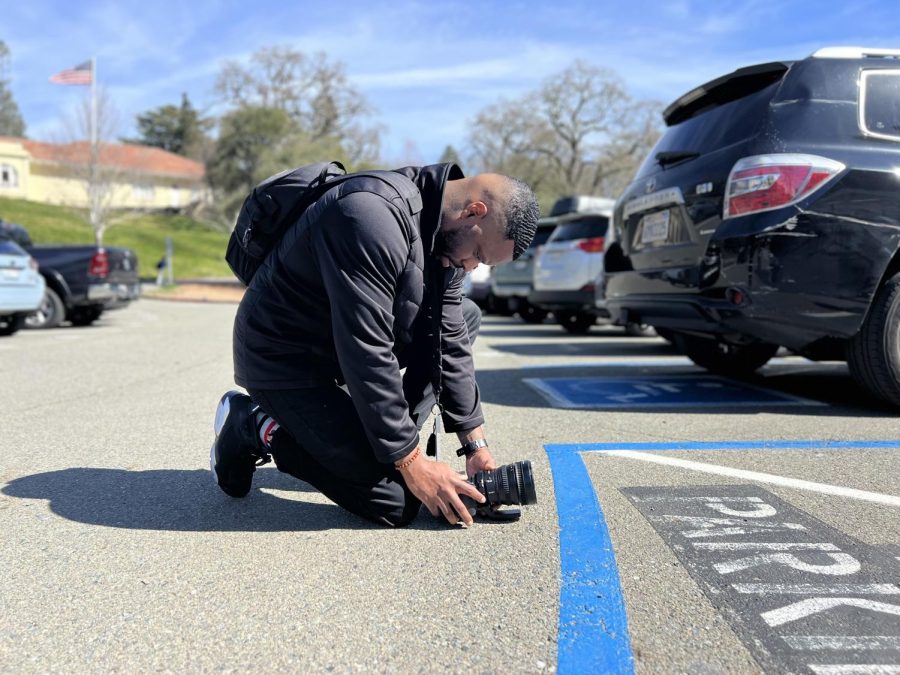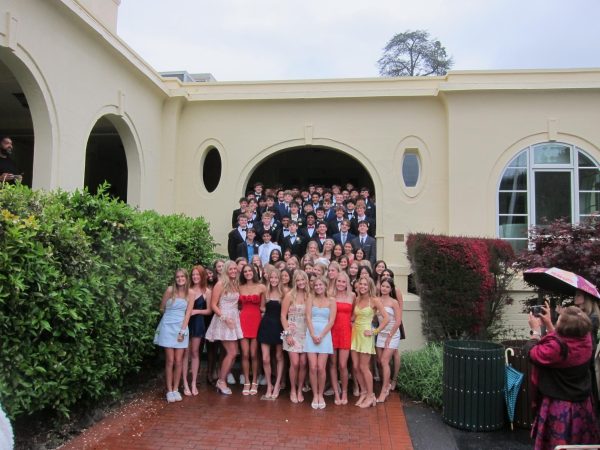Fellows use film to break down post-prison mission
Antwan Williams works with a camera near the gym complex on March 2, 2023. He’s one of the two E.E. Ford Fellows working on a documentary project.
March 4, 2023
E.E. Ford Fellows Antwan “Banks” Williams and Eric “Maserat-E” Abercrombie have joined forces with the Branson art department to produce a documentary about their mission with the school.
Open to collaboration with all Branson students who want to get involved, the upcoming documentary will provide an account of the time Williams and Abercrombie spent working with Head of School Chris Mazzola and the Branson community.
A couple years ago Mazzola and English Department Chair Giles Scott created a “Shakespeare and Social Justice” course at Branson, inspired by the Shakespeare program at San Quentin State Prison, where both men served time.
Armed with his sharp artistic expression as an independent filmmaker and musical artist, along with his direct experience with the carceral system, Williams intends to share both his creative genius and perceptive insight with students.
Williams hopes to discuss the prison pipeline and how it affects communities of color, as well as life after incarceration.
“I’m planning on doing a bit of our backstories,” Williams said. “Filming [Abercrombie] in some of the schools he went to in Oakland and myself at Crenshaw High, [where] I graduated from, to show how different the campuses are, but also to highlight just the overall structure and how it resembles prisons.”
“Formerly incarcerated people have already been marginalized in such a way that is inconducive, that is really harmful,” he said. “I want the documentary to highlight the process and the power that can come from community-building, especially when it’s dealing with formerly incarcerated people.”
Williams and Art Department Chair and project manager Eric Oldmixon hope that the documentary will reach beyond just the Branson community, and that it is able to take on a life of its own while helping to deconstruct the prison pipeline and change the narrative for formerly incarcerated people.
“We want this to be a model for other schools that have access to funds and these organizations that are willing to make these substantial donations so other people can go into schools and work in this way,” Williams said. “We want this documentary to be a model for the work that has been done, that isn’t being seen.”
Likewise, it was important to Williams and Abercrombie to highlight the process itself. Oldmixon explains that initially the plan was to hire an outside videographer. This approach, however, was immediately rejected by Williams, who had already known the direction he wanted to take. He shifted it to include the Branson students and allow them to showcase the work that has been done.
Additionally, as an artist, Williams was interested in teaching students through a collaborative process the art, power and importance of filmmaking, as well as how to effectively tell a narrative.
The students, Williams explains, are a crucial piece of the project. Williams intends to compare the way students see their school with his own perspective of the Branson community, so student expression is key to viewing Branson through both an external and internal lens.
Regardless of outcome, Williams is “just excited to see how the students express their authentic selves throughout the project,” he said.
The goal is to encourage students to explore how individual expression can contribute to a broader purpose. The project is “about nurturing that collective insight,” Oldmixon said.
Tara Sridharan, a junior at Branson who will film and do music production, is excited to use this opportunity to share her love for the Branson community.
“The school provides students with so many opportunities to follow their passions and meet so many different types of people — that’s really what I want to capture as the true Branson environment,” she said.
Sridharan is also eager to learn more about the filmmaking process from Williams, an accomplished artist and musician.
“I’ve always had a passion for movies and the making of them,” Sridharan said. “It’s so interesting to see all the parts come together.”
Despite its message, many aspects of the project remain up in the air, with progress likely to accelerate this spring semester.
“We want it to be really process-oriented. We don’t want to prescribe the end result, but to give it a little bit of a container,” Oldmixon said.
Williams is enthusiastic about the task that lies ahead and hopes students share that same energy.
“It’s an opportunity to do something that [students can be] really proud of, and that really showcases what it’s like to be here, what it’s like to be a part of this process,” Williams said. “I’m very excited for all the possibilities.”




